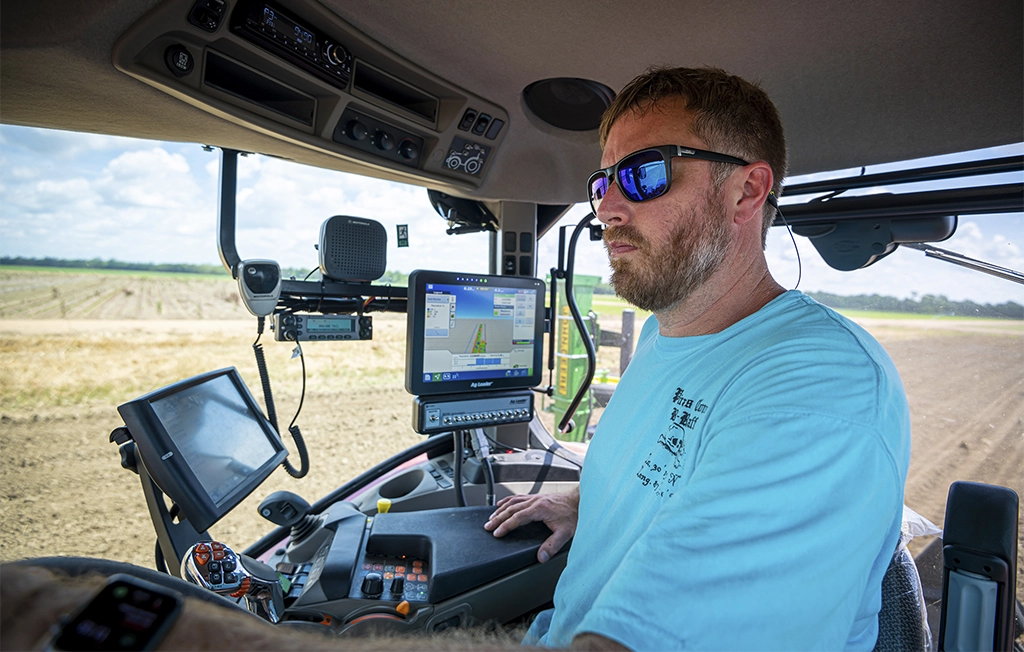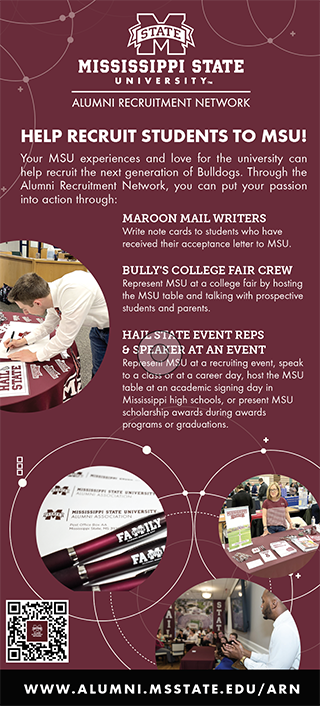MSU launches Agricultural Autonomy Institute
Imagine a farm where autonomous vehicles herd dairy cows into the milking parlor and a small robot uses artificial intelligence to pick a cotton boll at the exact right moment. Overhead, a drone determines how much water and pesticide each soybean plant needs, triggering a response from devices on the ground. Meanwhile, the data collected during these tasks sparks algorithm updates that will drive changes to improve yield in the next crop.
While these ideas may not be ready for widespread adoption, a new multidisciplinary institute at Mississippi State University is working to develop these technologies and more to help feed a growing global population and position MSU as a hub for advanced agriculture.
The MSU Agricultural Autonomy Institute is the vision of Alex Thomasson, head of MSU’s Department of Agricultural and Biological Engineering. He saw the potential of a university-level institute to bring together Bulldog faculty and research centers in a shared mission–advancing autonomous agricultural systems.
The new institute received startup funds from the Robert M. Hearin Foundation and officially opened in 2023 with Thomasson as the director. Madison Dixon, formerly research director at MSU’s Raspet Flight Research Laboratory, is the institute’s associate director.
Thomasson said a lot of autonomous agriculture work is being done to address chronic labor shortages in the world’s food production systems. As the field develops over the coming years, the Agricultural Autonomy Institute can make Mississippi State a hub for this research and development, driving economic activity in the state’s largest industry.
“I really hope to see Mississippi become the Silicon Valley of agricultural autonomy,” said Thomasson, who holds the William and Sherry Berry Endowed Chair. “We want to help attract corporations that are interested in working in this space and potentially license technologies we develop for commercial use. We also have the opportunity to enhance the farming workforce through training programs, allowing the people in the field to be more productive.”
KEEPING MSU AT THE FOREFRONT OF AGRICULTURE
The Agricultural Autonomy Institute builds on over a century of applied agricultural research at MSU. For decades, the university has ranked nationally among the top 15 universities in agriculture and natural resources research and development expenditures. That research has often integrated high-end, emerging technologies such as uncrewed aircraft systems or even supercomputers.
“The field of agriculture is rapidly changing, and Mississippi State has long been a leader in driving innovative change to meet new challenges. This institute will enhance our capacity and capabilities as we develop new solutions and technologies that agriculture needs,” said MSU President Mark E. Keenum, who previously served as an Under Secretary of the U.S. Department of Agriculture and is the current chairman of the Foundation for Food and Agriculture Research.
“It is exciting for our students as well,” he continued. “They’ll have new opportunities to engage in groundbreaking research with our world-class faculty. There will also be many positives for producers in Mississippi and beyond who will benefit from all of the insights gained through this research.”

While each advancement has its initial challenges, Dixon said farmers are often open to new technologies once the potential benefits outweigh the costs.
“Farmers are extremely progressive with their understanding and application of technologies when it benefits their operations,” Dixon said. “They have really bought into precision agriculture, and I view autonomous agriculture as the next generation of that. It is exciting to be a part of making that next step happen for growers across our state and even the country.”
TAKING PRECISION AG TO ANOTHER LEVEL
MSU has a long history of advancing research in precision agriculture, the broad term used to describe agricultural practices that use precision measurements and observations to inform the actions taken at any stage of the growth and harvest cycle. Those precise measurements result in higher yield and lower costs as growers can be more efficient with resources such as water and pesticide. Globally, precision agriculture is viewed as an important strategy for producing enough food to feed a growing population and adapting to shifting climate conditions.
Dixon said robotics and artificial intelligence can take that concept to the next level, allowing even more precise growing strategies while addressing farm labor challenges. As an example, a team of MSU researchers have developed a small robot for harvesting cotton. The researchers have trained the device to recognize mature cotton bolls and pick them at the right time by using machine learning, which is the learning and adaptation of a computer system based on collected data.
Hussein Gharakhani, an assistant professor in the Department of Agricultural and Biological Engineering, is leading the project as an extension of doctoral work he recently completed with Thomasson’s guidance. While the tool is not yet ready to operate at a large scale, Gharakhani and others are working toward that goal.
Among the many challenges in advancing autonomy in agriculture is the need for robotic systems to navigate off-road terrain. MSU’s Center for Advanced Vehicular Systems has made off-road autonomy a major focus of its research, which Thomasson said is another example of why MSU is a perfect place to launch the new institute. Last year, CAVS researchers partnered with the Mississippi Agricultural and Forestry Experiment Station to conduct pilot studies on the effectiveness of using robots to herd dairy cows.
“The institute will help secure funding for projects, administer those projects and work the economic and workforce development angles, but what we really want to do is be a hub that connects different experts on campus,” Thomasson said. “If someone in electrical and computer engineering is doing work in remote sensing that has potential applications in agriculture, we want to make that connection.”

The institute works closely with faculty and researchers in the College of Agriculture and Life Sciences and Bagley College of Engineering, as well as the Mississippi Agricultural and Forestry Experiment Station and MSU Extension Service.
Having grown up in a Mississippi Delta farming family, Dixon said that as the institute continues to grow, he is excited about helping solve the very challenging problems farmers face.
“Our state’s producers have the impossible task of trying to increase their productivity and yield to keep up with rising global demand, all while struggling to find labor and dealing with input costs that are higher than they have ever been,” Dixon said. “They are also battling severe impacts of climate change that threaten some of the more traditional agricultural practices.
“They really have the deck stacked against them, but this institute is one of the ways that MSU has their backs,” he continued. “We want to do everything we can to ensure they can continue to be successful and that more generations of farming families, like the one that I came from, can thrive in the future.”
By James Carskadon, Photos by David Ammon and Dominique Belcher

Mississippi State’s leadership in agricultural autonomy is just the latest chapter in the university’s storied history of being at the forefront of research to advance agriculture, natural resources and forestry.
For more than a century, Bulldog scientists and researchers have devoted their efforts to making the ag industry sustainable, profitable and a worthwhile investment for producers and landowners.
“Every day our researchers are studying new ways to better feed, shelter and clothe our world, and our outreach and Extension efforts help to ensure that Mississippi producers can stay at the forefront of agricultural production and be positioned for success,” said Keith Coble, MSU’s vice president for the Division of Agriculture, Forestry and Veterinary Medicine.
Nationally, Mississippi State ranks 97th in the National Science Foundation’s latest Higher Education Research and Development survey, which covers data from fiscal year 2022.
Broken out by discipline, the survey puts MSU at No. 11 for spending on agriculture research and No. 14 for natural resources. Aerospace engineering rounded out MSU’s top 15 disciplines in the FY 2022 survey.
Coble explained that Mississippi State’s research efforts in agriculture and forestry have a direct impact on the state, as those industries are responsible for more than $16 billion of value added to the economy and account for 17% of all jobs in Mississippi.
“The MSU Agricultural Autonomy Institute is essential to us maintaining our leadership position both nationally and internationally,” Coble said. “Labor needs in agriculture are driving the demand for ag autonomy. This institute creates solutions to challenges the industry faces, while also training a skilled workforce and attracting new business to our state.”









